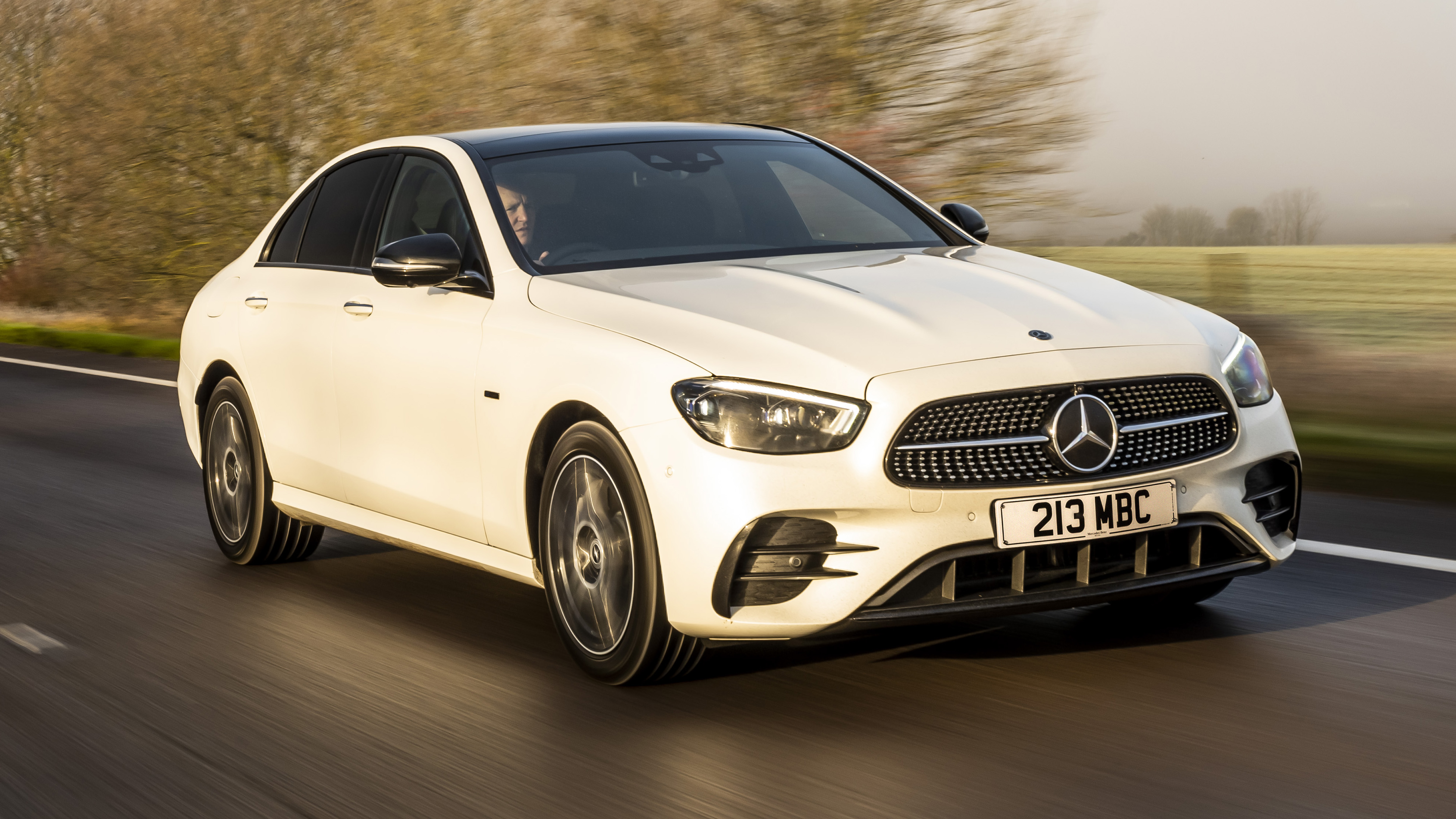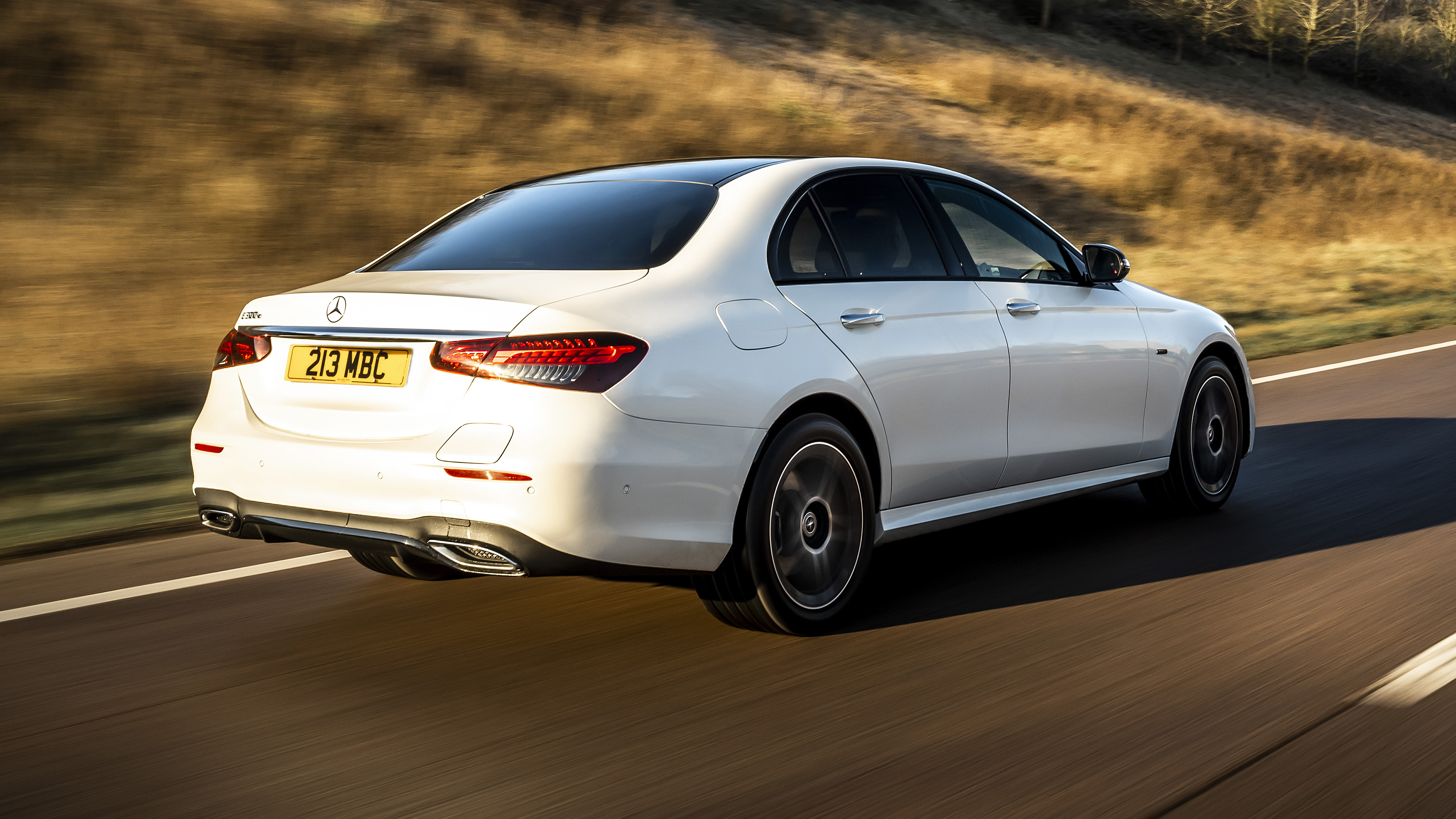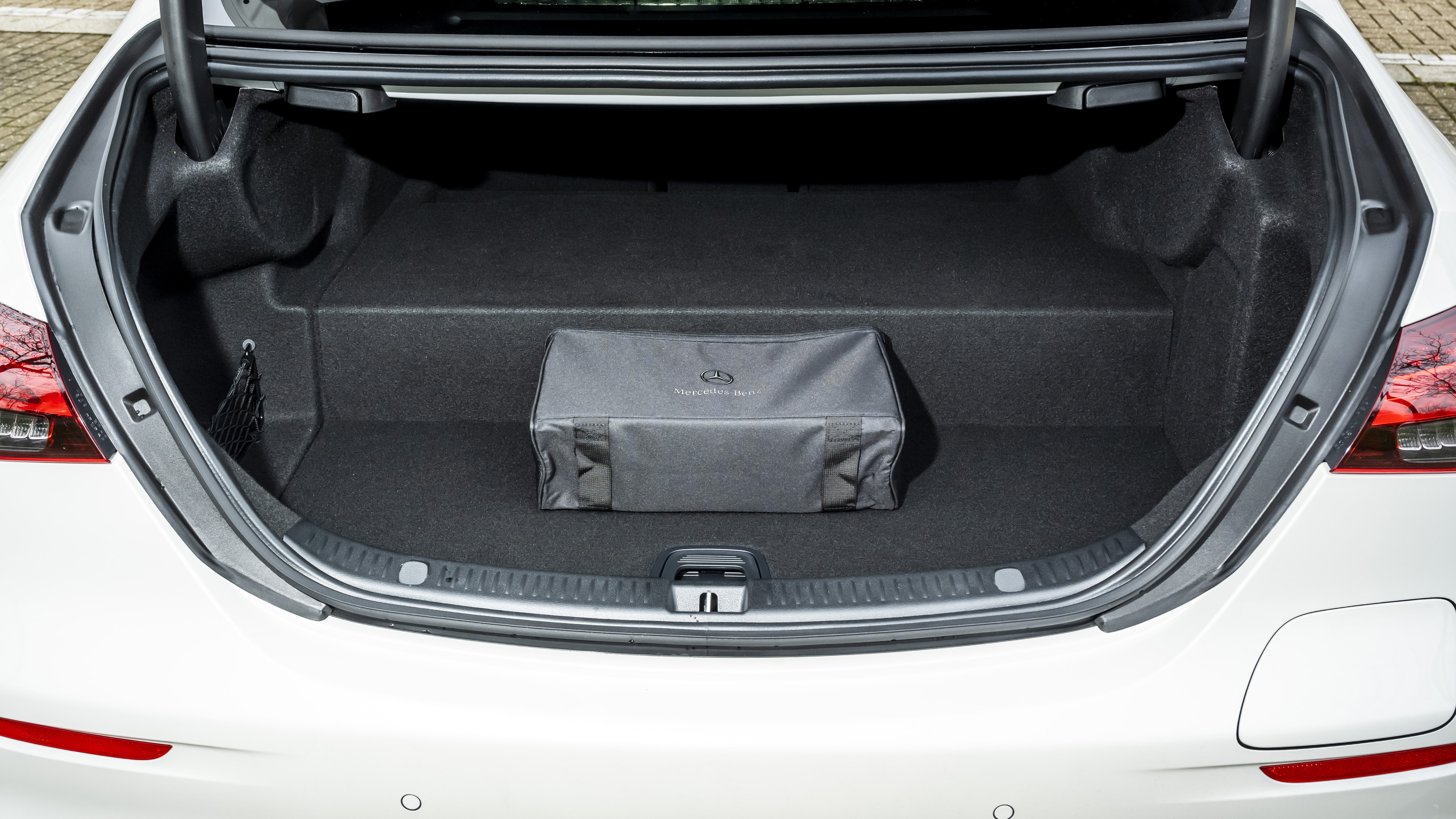
SPEC HIGHLIGHTS
- Battery
Capacity13.5kWh
- BHP
320bhp
- 0-62
5.9s
- Max Speed
152Mph
Plug-in hybrid, right?
Correct. Mercedes is doing an all-electric E-Class-sized car – it’s called the EQE and will be built on the same modular platform as the flashy new EQS – but this isn’t it.
No, this is the newly facelifted Mercedes E-Class in plug-in ‘E300 e’ spec. It’s got a 2.0-litre petrol engine and a 13.5kWh battery for a combined 316bhp/516lb ft of motive force, and Mercedes claims up to 35 miles of electric range and 37g/km of CO2. 0-62mph takes 5.7 seconds, so it’s pretty quick.
There’s a ‘E300 de’ too. Same car, same hybrid system, but married to a 2.0-litre diesel internal combustion engine instead. Similar performance/economy figures, but about £1,200 pricier if you’re buying outright. And you can have an estate, whereas the petrol hybrid is saloon-only for some reason.
Either way, run a plug-in E-Class as a company car and you’ll save thousands in BiK tax versus a non-hybrid petrol or diesel E-Class. It’s a no-brainer.
Is it complicated?
Hugely, but the E300 e does a better job than many other plug-in hybrids of isolating its driver from the complexity of its powertrain. For most people this is A Good Thing.
In the (outgoing) C-Class plug-in, for example, there are two mode switches: one for the hybrid system (electric mode, battery hold etc.) and the other to toggle between Sport, Comfort and so-on. In the E-Class there’s only one. Sure you lose a tiny bit of configurability, but it makes the E an easy car to simply hop in and drive without having to worry about constantly switching between modes to get the best out of it.
You can still tell it to save battery power for later or go ahead and use it all up, and switch between Sport and Comfort drive modes as you wish, but best practice is to leave it in Comfort and let it do its own thing.
Oh, and keep it plugged in whenever you’re at home (and work, if you can). Not much point otherwise. A full charge takes around 90 minutes on a 7kW wallbox or five hours on a normal three-pin plug.
Top Gear
Newsletter
Thank you for subscribing to our newsletter. Look out for your regular round-up of news, reviews and offers in your inbox.
Get all the latest news, reviews and exclusives, direct to your inbox.
How does it drive?
The operation of the hybrid system is plenty smooth – you won’t feel the nine-speed auto swapping cogs or the engine cutting in or out. You may hear it though – the 2.0-litre petrol has shades of four-cylinder diesel about its tone, especially when it’s under load, made all the more obvious by the fact oftentimes you’re driving solely on the e-motor.
Said e-motor serves up 120bhp all by itself. It’s pokey enough for smart launches onto busy roundabouts and can handle motorways and fast-flowing B-roads without calling on the petrol engine for support. A more progressive throttle pedal would aid smoother getaways, mind – even in Comfort it leaps off the line when you’d much rather it trickle.
I saw 25 miles of electric running on a 95 per cent-charged battery. It was a cold day, I had the heater on and wasn’t exactly trying to be economical, so that’s actually not bad at all.
Of course the E300e is a heavy car. The regular E-Class is no match for a regular 5 Series dynamically, so the same is true of the plug-in hybrids. The E is soothing instead of scintillating and that’s just fine. A tremendous tourer.
Though the added heft of the batteries has done the ride no favours. E-Classes are comfortable without exception, but this particular model on the standard springs (you can’t get air suspension) didn’t ride quite as smoothly as I’d hoped.
How about the rest of it?
Fine car, the new E-Class, as you’ll know if you’ve read our review of the full Mercedes-Benz E-Class range.
The hybrids look exactly the same as the regular car. They’re only available in AMG Line trim and up, so get the good wheels and bodykit as standard. What sets the hybrids apart are the badges, the charge port on the back bumper’s right corner and, when you open the boot, the massive battery-pack that compromises luggage space.
Pity Merc couldn’t find somewhere else to package the batteries. Always irritating, but less annoying in the saloon tested here than the E300 de Estate.
Should I buy one?
If it’s going to be your company car, then yes. Hybrid Es cost a similar amount to lease as the non-hybrids and you’ll pay much less BiK tax. But they don’t just make sense on a financial level – the facelifted E-Class is an incredibly accomplished, high-quality car (as was the pre-facelift, admittedly), and the E300 e is particularly smooth. Keep it charged and reap the rewards. Just a pity about the slightly gruff engine note and compromised boot.
Score: 8/10
Featured

Trending this week
- Car Review
BMW 1 Series






